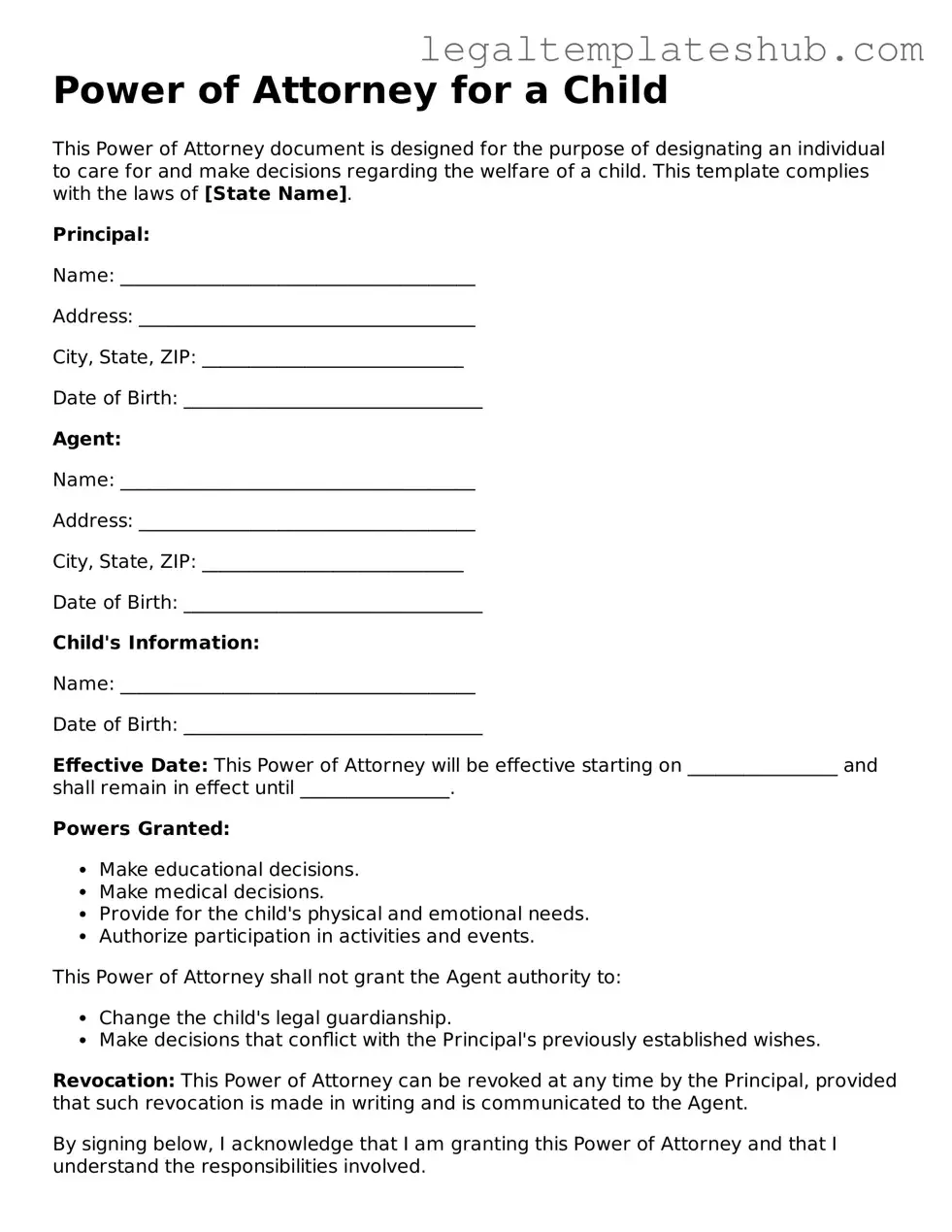Printable Power of Attorney for a Child Template
The Power of Attorney for a Child form allows a parent or guardian to designate another individual to make decisions on behalf of their child in specific situations. This legal document can be crucial for ensuring that a child's needs are met when a parent is unavailable. Understanding its importance can help you make informed choices for your family’s well-being.
To take the next step, consider filling out the form by clicking the button below.
Access Editor
